
Photo by Karim Ghonem
The Six Absolutes of Perfect Technique
The practical coach’s guide to teaching optimal human movement
By Kim Goss
Summary
In this article, Kim Goss outlines a simple yet powerful coaching framework developed by Dr. Greg Shepard to teach optimal movement across athletic disciplines. These six verbal cues help athletes maintain safe and efficient mechanics whether lifting, sprinting, or competing in various sports. Rooted in decades of practical coaching experience, the Absolutes unify communication between coaches, reduce confusion among athletes, and build a foundation for advanced technique. These principles remain a timeless resource for enhancing performance and preventing injury.
Introduction
The Six Absolutes of Perfect Technique are straightforward verbal cues that help coaches and physical educators teach optimal technique in nearly any athletic activity. They were created in 1988 by Dr. Greg Shepard, the founder of the athletic fitness company Bigger Faster Stronger (BFS). BFS clinicians have taught these cues to coaches at thousands of clinics, exposing tens of thousands of athletes to them.
The Six Absolutes are more than just motivational slogans promoting a positive “Let’s Win!” environment; they enhance athletic efficiency. In a 2016 paper on sprinting, researchers reviewed 16 cues for acceleration and 21 for maximum speed. They concluded, “Providing appropriate verbal instructions and cues is a simple and effective way to enhance sprint performance in athletes.” One problem.
A coaching toolbox of 37 verbal cues may be useful for producing elite sprinting performance, but presenting too many cues to beginners often creates confusion. They can experience “paralysis by analysis,” freezing up as some people do while giving a speech…or trying the zip line at The Fremont Street Experience in Vegas for the first time (just sayin´).
In contrast, my weightlifting coach was Jim Schmitz, a Head Coach for the US Team in the Olympic Games and the coach of 1984 silver medalist Mario Martinez. Whether he was coaching a first-day beginner or one of his numerous Olympians, Schmitz’s cues were always brief and straightforward. For the clean, he would tell me, “Hit high on the thigh!” and for the snatch, “Hit high on the thigh!” (Schmitz had a few more cues, but “Hit high on the thigh!” covered a lot of ground.)
Having given over 10,000 athletic fitness clinics over their nearly five-decade history, BFS clinicians found that coaches and physical educators often felt overwhelmed by the number of athletes and students they had to supervise. For this reason, Dr. Shepard offered just six simple cues. Of course, more specific cues can be added later, such as “snap your shoe’s laces to the sky!” for sprinting or “pull the bar apart” for the bench press.
With that background, here are the Six Absolutes:
Absolute #1. Use an Athletic or Jump Stance
Absolute #2. Be Tall
Absolute #3. Spread the Chest (Lock-in the Lower Back)
Absolute #4. Align the Toes
Absolute #5. Align the Knees
Absolute #6. Eyes on Target
It’s important to emphasize that the Six Absolutes simplify coaching by presenting a common terminology. When teaching the military press, instead of a PE instructor saying, “Lift your chest” and a sprint coach shouting, “Run tall,” both coaches can say, “Be tall.”
Those are the basis—let’s move on and take a deep dive into each of the Six Absolutes:

Image 1. Dr. Greg Shepard created the Six Absolutes of Perfect Technique. He was the founder of the athletic fitness company Bigger Faster Stronger and the publisher of BFS magazine.
Absolute #1. Use an Athletic or Jump Stance
Athletes should use two basic foot stances: a jump stance or an athletic stance.
The Jump Stance is preferred when an athlete needs to generate maximum speed or power. The feet are positioned directly beneath the hips, about ten inches apart, depending on the athlete’s height. Athletes typically adopt this stance at the beginning of a vertical jump or a power clean, as a wider stance would disperse much of the power diagonally.
An Athletic Stance positions the feet about shoulder-width apart, with knees slightly bent, and often with the feet pointed slightly outward. This stance lowers an athlete’s center of gravity and broadens their base of support, enhancing stability and lateral movement. While a running back employs a Jump Stance to run faster, an offensive lineman adopts a wider stance to create a running lane for his teammate by blocking defensive players. Want more? A quarterback adopts an Athletic Stance before throwing a pass, a baseball player uses it at the plate to generate more power in their swing, and a basketball player uses it during the triple-threat, where they can dribble, pass, or shoot.
Athletes frequently transition between a Jump Stance and an Athletic Stance. During a power clean or a push jerk, the athlete begins in a Jump Stance to exert maximum force on the bar, then shifts their feet outward to catch the weight in a more stable Athletic Stance. In tennis, a server uses a Jump Stance to generate maximum velocity on the ball, while their opponent adopts an Athletic Stance to quickly move laterally to reach the ball.
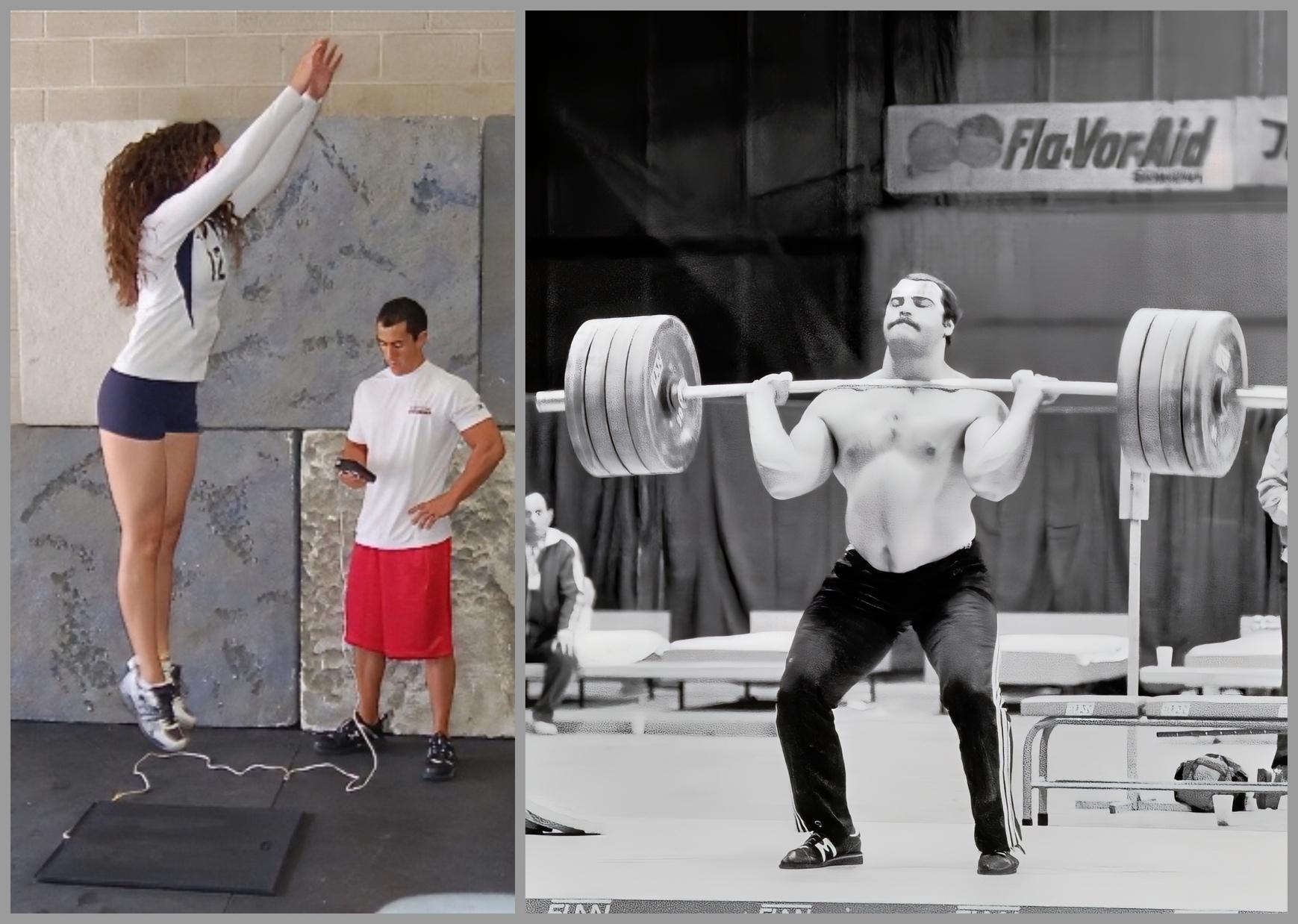
Image 2. For maximum power, such as when performing a vertical jump, a Jump Stance works best with the feet positioned directly under the hips. The wider Athletic Stance offers more stability, such as with the catch position of the power clean. Shown is Anatoly Pisarenko, a 4x World Champion who clean and jerked a world record of 584 pounds at 271 pounds bodyweight. (Left photo courtesy BFS; right photo by Bruce Klemens)
Many powerlifters adopt an especially wide stance when performing a squat or deadlift. One of the goals of powerlifting is to lift the maximum amount of weight over the shortest distance while adhering to the rules of their federations, and these exceptionally wide stances enable these athletes to achieve just that. Because these stances are too wide to be categorized as athletic, they can be referred to as a powerlifting stance for the squat and a sumo style for the deadlift.
Because these stances are too wide to be categorized as athletic, they can be referred to as a powerlifting stance for the squat and a sumo style for the deadlift, says Kim Goss Share on X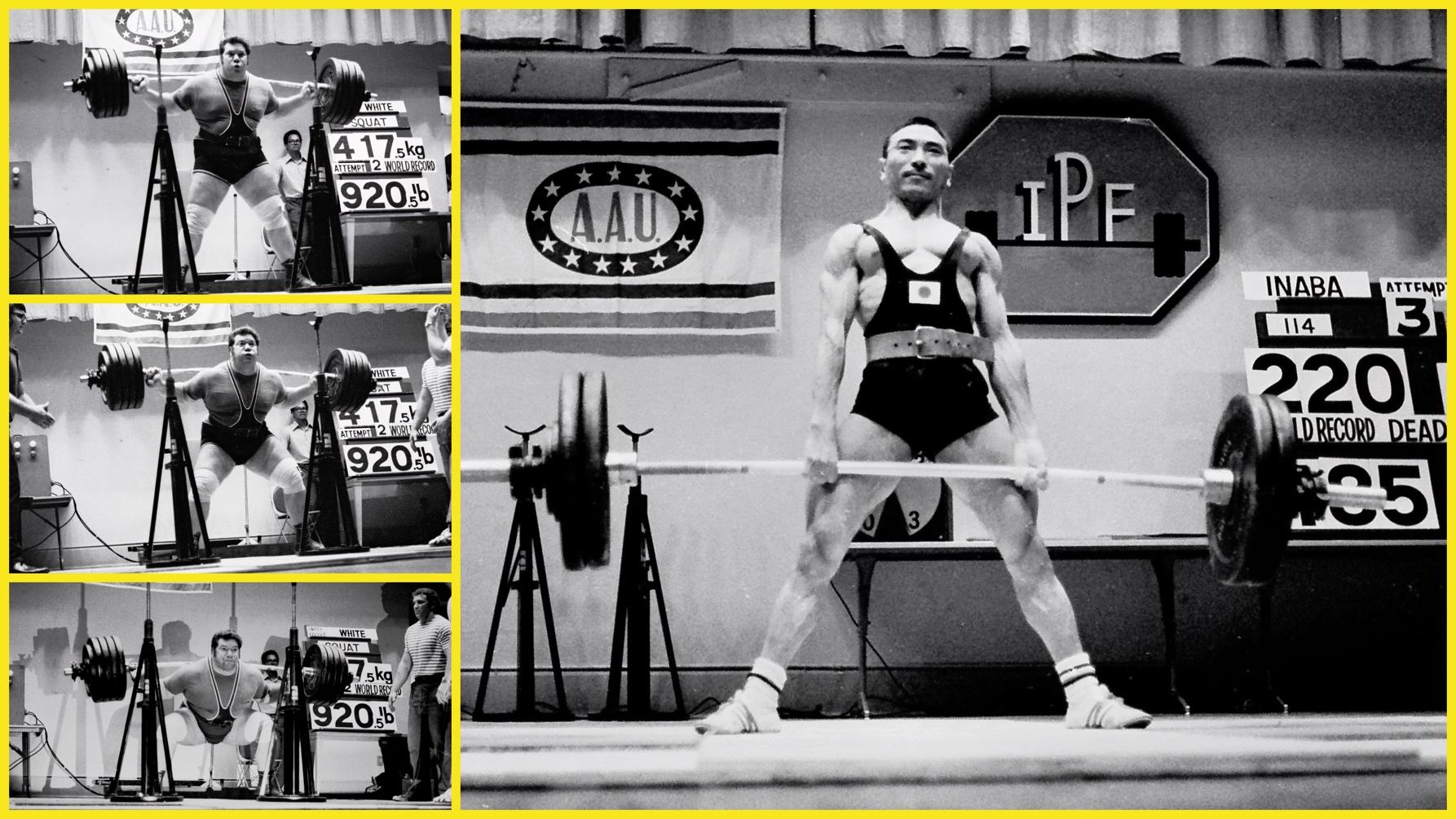
Image 3. Powerlifters often adopt especially wide stances for the squat and deadlift to lift the heaviest weights, but these are not considered athletic stances. (Photos by Bruce Klemens)
Absolute #2. Be Tall
Being tall is a verbal cue to help athletes look more athletic and practice good posture. Okay, so what the heck is good posture?
In 1947, the Posture Committee of the American Academy of Orthopaedic Surgeons provided the following definition of optimal posture and its benefits:
“Good posture is that state of muscular and skeletal balance which protects the supporting structures of the body against injury or progressive deformity irrespective of the attitude (erect, lying, squatting, stooping) in which these structures are working or resting. Under such conditions the muscles function most efficiently, and the optimal positions are afforded for the thoracic and abdominal organs.”
Shepard says that “immediately, good things happen” when an athlete who slouches hears the command, Be Tall. “The Be Tall absolute should be used with most lifts in the weight room. In squatting, every athlete needs to squat with the feeling of sitting tall. You do not want to bend over with your head down and hips high, as this can injure the lower back and does not develop the functional strength for athletes. Outside the weight room, the Be Tall absolute should be used as often as possible. For example, after full speed is attained in sprinting, athletes should sprint tall.” He added, “Athletes need to maintain a tall posture all the time, whether walking, sprinting, lifting, stretching, or even sitting.”
One key to achieving good posture is understanding the difference between anterior and posterior pelvic tilts. When the pelvis is rotated forward due to muscle imbalance (as shown in the before drawing in image 4), the lower abdominals are chronically stretched, which adversely affects their function, and the spine loses much of its shock absorption properties. There is also convincing research to show that excessive anterior tilt reduces stride length and increases the risk of hamstring injuries. Besides the command Be Tall, coaches may need to supplement their athletes’ training with specific stretching exercises for the muscles that flex the hip and strengthening exercises to ensure a strong core.
As Charlie Francis used to say, “If it looks right, it will fly right!”

Image 4. The “Be Tall” cue throughout athletic performance helps ensure optimal postures, enabling athletes to better absorb stress, produce power, and prevent injury. (Right top photo by Viviana Podhaiski, LiftingLife.com; right bottom photo by Bud Charniga.)
Absolute #3. Spread the Chest (Lock-in the Lower Back)
The Six Absolutes often overlap, and the “Be Tall” absolute is related to the Spread the Chest absolute. However, Spread the Chest focuses more on the position of the pelvis, particularly when lifting weights from the floor. (FYI: A postural pelvic tilt is more appropriate for lifting weights overhead and stretching the muscles that flex the hip.)
“The pelvis plays a vital role in the ability of the athlete to produce strength efficiently and safely, because it is the major link between the spinal column and the lower extremities,” says Sports Scientist Mel Siff, PhD., and Professor Yuri Verkhoshansky. Speaking specifically about the anterior pelvic tilt, Siff said “…excessive or prolonged lumbar flexion can be particularly stressful to the lumbar intervertebral joints and the peri-articular soft tissues.”
To achieve an anterior pelvic tilt (often referred to as a “neutral spine”), Shepard proposed using the posture cues “Spread the Chest” or “Lock-in the Lower Back.” One coaching method to help these athletes achieve this posture is to have them place their hands on their knees with some pressure, as if they were a baseball umpire, and thrust their chest forward. Simply performing this action often provides the athlete with kinesthetic awareness to achieve the optimal spinal posture for lifting.
“Spread the Chest” can be applied to many other athletic activities, such as sprinting, running, or preparing to swing a baseball bat. Can you imagine attempting to hit a baseball with a rounded back? It’s simply not an athletic posture.
“Spread the Chest” can be applied to many other athletic activities, such as sprinting, running, or preparing to swing a baseball bat. Can you imagine attempting to hit a baseball with a rounded back? It’s simply not an athletic… Share on X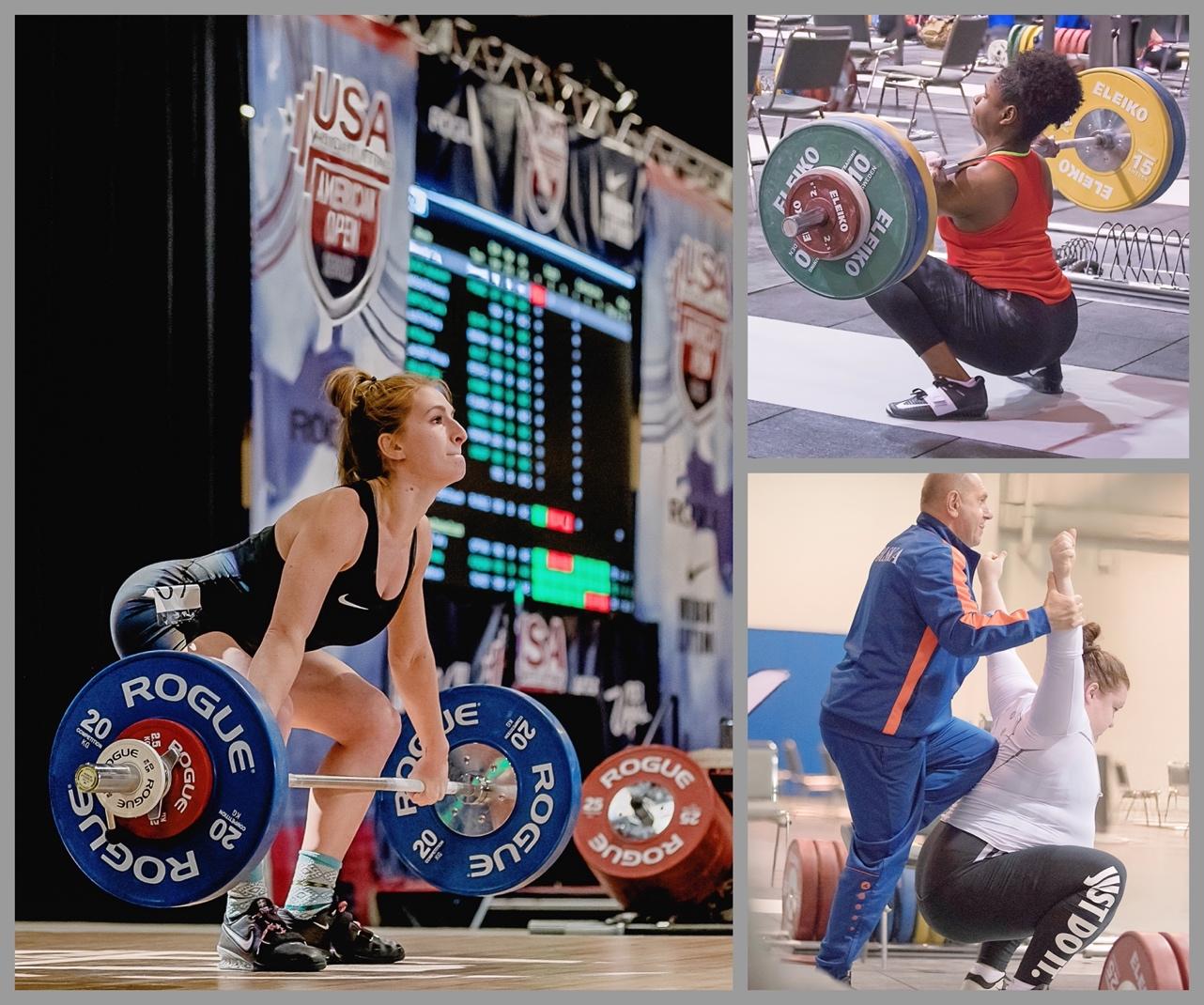
Image 5. “Spread the Chest/Lock-in the Lower Back” are coaching cues that help protect the back and enhance power transfer from the legs to the upper body. Shown is Team BFS weightlifter Nicole Morales locking in her lower back as she pulls the bar off the floor, a lifter maintaining an arched back during the catch position of a clean, and a coach assisting his athlete achieve a locked-in position. (Left photo by Viviana Podhaiski, LiftingLife.com; right photos by Ryan Paiva, LiftingLife.com.)
Absolute #4. Align the Toes
This may sound like a line from Captain Obvious, but athletes should position their feet in the optimal direction for efficient movement. This usually means the toes should be straight ahead (Jump Stance) or slightly pointed out for balance (Athletic Stance). Let me expand on the word “usually.”
Due to the way the upper thigh bone (femur) inserts into the hip, athletes often feel more comfortable with about five degrees of external rotation of the foot when squatting. Additionally, some individuals have what is known as “open hips,” making it more natural for them to place their feet in a greater degree of external rotation. This is fine, and provides a distinct advantage for ballet dancers (and Cosplay contestants dressed as Charlie Chaplin). The general guideline is to avoid exaggeration.
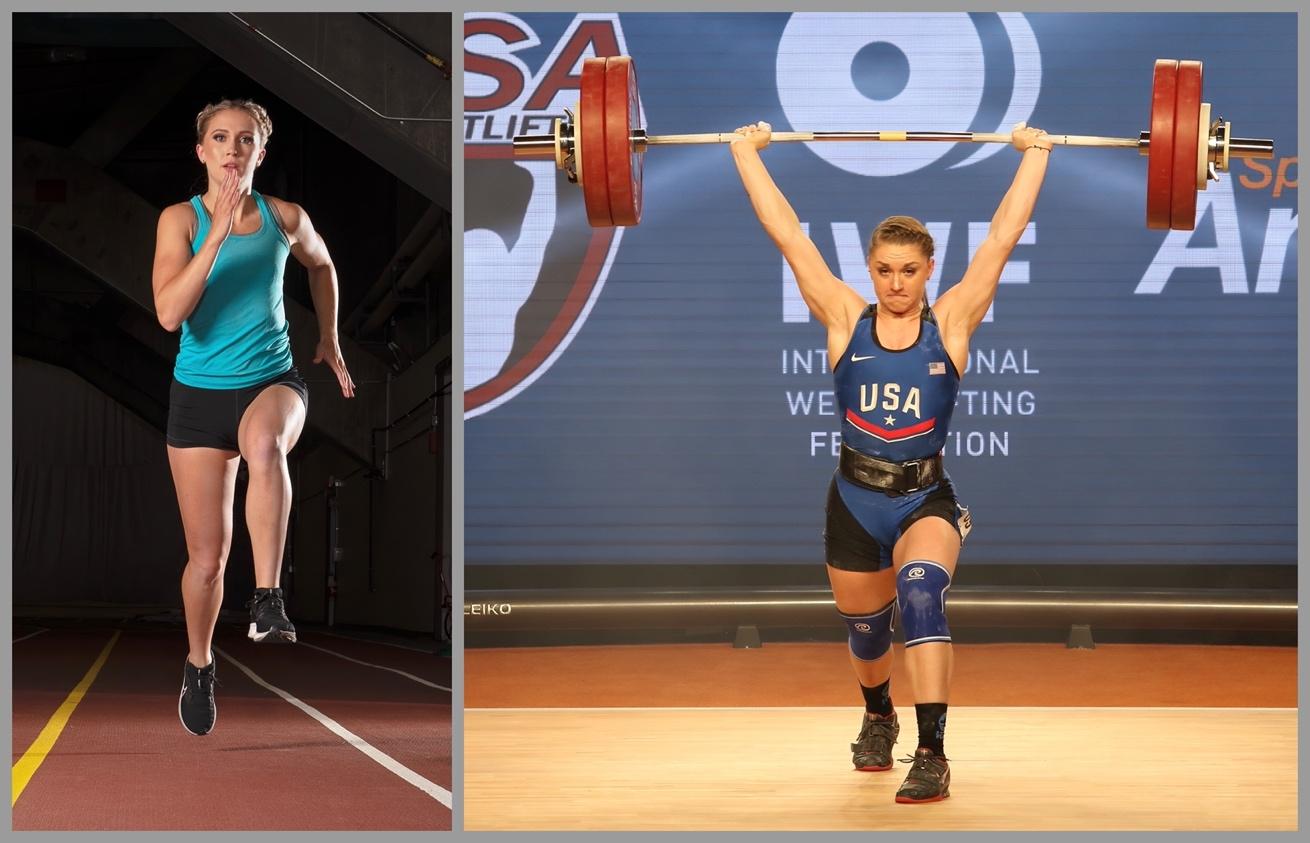
Image 6. Optimal performance involves paying attention to the position of the toes in relation to the knees. Shown with a Toes Aligned sprinting posture in Maddie Frey, a Brown University graduate who broke the school’s 200m record that stood for 32 years. At right is Olympian Maddie Rogers. (Left photo by Karim Ghonem; right photo by Joseph McCray, LiftingLife.com.)
Absolute #5. Align the Knees
Align the Knees is associated with Align the Toes. Shepard said athletes should try to align their knees with their toes in every phase of strength and conditioning.
Shepard said knees that are perfectly aligned will be straight from every angle. A test used by BFS clinicians involves taking a ruler and placing the top end at the center of an athlete’s knee, allowing it to hang perpendicular to the ground. The bottom of the ruler should be positioned at the center of the athlete’s toes, specifically the long toe. If the ruler falls inside or outside the edges of the feet, the knee alignment is incorrect. Let’s see how this cue applies to squats.
One common problem with squats is when athletes allow their knees to come together excessively when they squat, putting pressure on the medial collateral ligament (located on the inside of the knee). When an individual rises from the squat, there is typically slight inward movement of the knees, which is natural. However, when you see an extreme buckling of the knees, the additional stress on the knee ligaments can become a problem that should be addressed. While specific exercises can help correct muscle imbalances that cause excessive knee alignment problems, the first step is to be aware that there is an issue and to focus on maintaining optimal alignment.
You can apply this same principle when coaching any activity: running, jumping, stretching, or sports practice. If your athletes maintain optimal alignment between their toes and knees, they will perform better in all these areas and will be less prone to injuries.
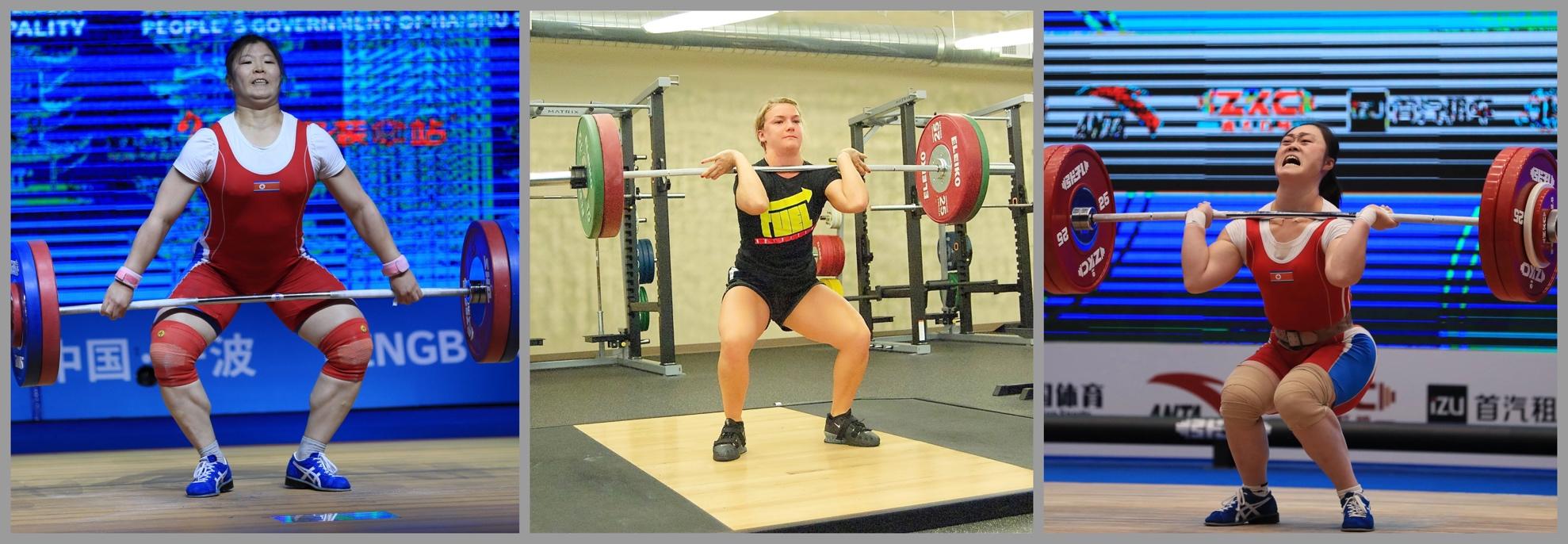
Image 7. Optimal athletic performance involves paying attention to the position of the knees. Team BFS athlete Sesely Omli displays optimal knee alignment in the center photo. (Left and right photos by Bud Charniga.)
Absolute #6. Eyes On Target
“Keep your eye on the ball” is one of the most common coaching cues in baseball. In football, a defensive player is often told to “target” the opponent’s hips, rather than their upper body. When you wrap up a player around the hips, they are less likely to be able to break free, as opposed to trying to tackle the upper body. Further, looking down and flexing the neck while tackling a ball carrier may cause a neck injury. Don’t look up and don’t look down, but stare intensely straight ahead and fix your eyes on a single point completely and totally throughout the lift.
In addition to seeing what you are about to hit or tackle, Eyes on Target is an important cue because the eyes influence head position (as the body tends to follow where the head goes). Let’s look at what a few sports scientists have to say on this subject.
In a review of 16 research studies on the effects of head position on human performance, researchers concluded that “abnormal head position changes affect muscle activity, proprioception, the pattern of breathing and neck pain.” Notes Siff and Verkhoshansky, “Flexion of the neck causes a reflex relaxation of the erector muscles of the back, which is potentially dangerous for resisted lifting movements such as squatting, cleaning and deadlifting. Therefore, it is vital to use a definite extension of the neck to facilitate powerful contraction of the postural muscles of the trunk during all lifting movements from the ground.” Note how the head postures in Image 8 can affect spinal posture.

Image 8. Eye position can influence head position, which in turn can affect back posture. During the pull for a clean or snatch, looking up (left) can lead to spinal hyperextension, while looking down (right) can result in excessive spinal flexion. Notice how the athlete in the middle photo is looking straight ahead and appears to have a more natural posture. (Left photo by Ryan Paiva, LiftingLife.com; middle photo by Linda Brothers, LiftingLife.com, and right photo by Bruce Klemens.)
Another aspect of Eyes on Target is that the eyes can influence what could be considered an athlete’s spatial orientation. In soccer, for example, the athletes often don’t look at the ball but at what their opponents are doing or where they want the ball to go.

Image 9. Eyes on Target helps athletes focus on optimal positions. In football, defensive players should focus on tackling the hips, not the upper body. In softball, the target for the batter is the ball, whereas in soccer, the target is often not the ball, but the action happening beyond it. (Softball and soccer photos by Joe Morel).
Putting it all together, Video 1 shows Team BFS weightlifter Christian Rivera performing a clean and jerk, with each segment highlighting one or more of the Six Absolutes.
Video 1. Team BFS weightlifter Christian Rivera demonstrates how the Six Absolutes apply to the clean and jerk, first in sequence and then at regular speed. Rivera set several New England weightlifting records and clean and jerked double his bodyweight.
As a former editor for BFS magazine for over a decade, I interviewed numerous coaches from coast to coast about their experiences with the Six Absolutes. They often told me that the cues made coaching large groups easier, helped unify their athletic programs, and that it didn’t take long for athletes to experience significant improvements in their technique. Success leaves clues, and the Six Absolutes of Perfect Technique represent a versatile and proven coaching tool that has stood the test of time.
Success leaves clues, and the Six Absolutes of Perfect Technique represent a versatile and proven coaching tool that has stood the test of time, says Kim Goss Share on XReferences
Shepard, Greg, and Goss, Kim. Bigger Faster Stronger, Second Edition. Human Kinetics, Pages 39-53.
Bend, Adam, et al. “Coaching Instructions and Cues for Enhancing Sprint Performance,” Strength and Conditioning Journal, Vol 38:1, February 2016, Pages 1-11.
American Academy of Orthopaedic Surgeons Posture and Its Relationship to Orthopaedic Disabilities. A Report of the Posture Committee, 1947. American Academy of Orthopedic Surgeons; Evanston, Illinois.
Hennessey, L. and Watson, A.W. “Flexibility and posture assessment in relation to hamstring injury.” British Journal of Sports Medicine. 1993;27(4):243-246.
Siff, Mel and Verkhoshansky, Yuri. Supertraining, Fourth Edition, Supertraining International, 1999, Pages 150-152.
Szczygieł E, Fudacz N, Golec J, Golec E. The impact of the position of the head on the functioning of the human body: a systematic review. International Journal of Occupational Medicine and Environmental Health. 2020 Sep 17;33(5):559-568.

